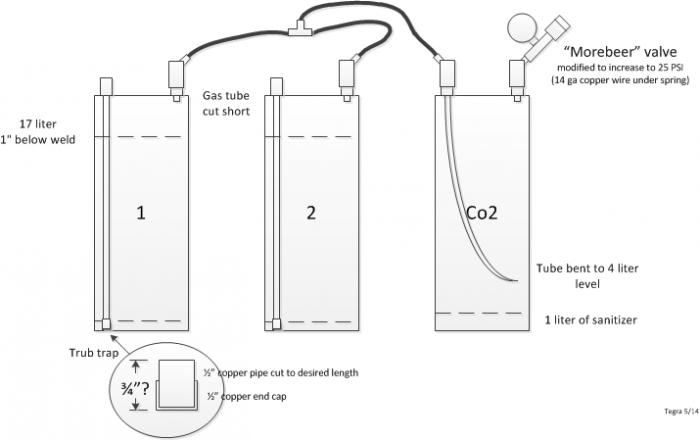Octavius
Well-Known Member
- Joined
- Apr 13, 2009
- Messages
- 248
- Reaction score
- 3
OK, can I get some more advice please - .
I'm fermenting a simple 1.040 pale ale in a corny. It was up to the top, so I used a blow-off for the first 2 days after pitching. Now it is fermenting at a constant 15 psig. I'll leave it alone for a full week total fermentation.
As I understand it, then the beer is crashed cooled.
At what temp?
Do I leave the spunding in place?
If so, at what pressure limit?
For a couple of days?
Then I transfer to serving keg:
With the serving keg 5 psig below that of the primary?
Serving keg is closed, or do I attach the spunding?
I prefer a serving temp of 55F, by the way.
(I tried reading this thread through, but it is just too long! )
)
I'm fermenting a simple 1.040 pale ale in a corny. It was up to the top, so I used a blow-off for the first 2 days after pitching. Now it is fermenting at a constant 15 psig. I'll leave it alone for a full week total fermentation.
As I understand it, then the beer is crashed cooled.
At what temp?
Do I leave the spunding in place?
If so, at what pressure limit?
For a couple of days?
Then I transfer to serving keg:
With the serving keg 5 psig below that of the primary?
Serving keg is closed, or do I attach the spunding?
I prefer a serving temp of 55F, by the way.
(I tried reading this thread through, but it is just too long!




